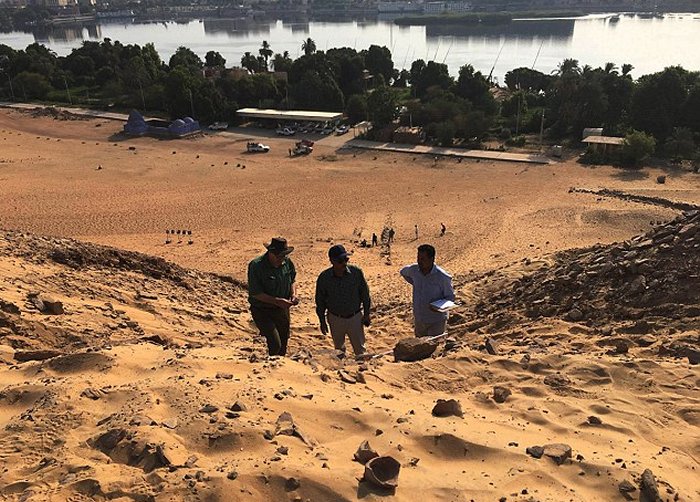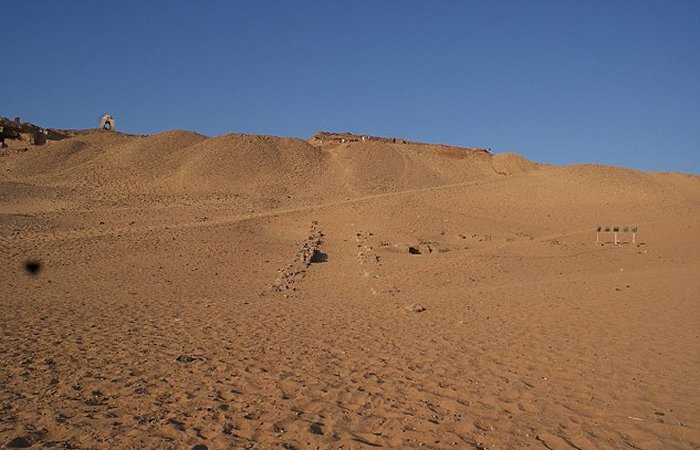MessageToEagle.com – How many more ancient tombs can still be found in Egypt? It looks as if there is still a lot we don’t know about those who lived in the land of the pyramids thousands of years ago.

Excavating in the northern part of the West Aswan cemetery at Qubbet el-Hawa, archaeologists have discovered what they consider to be “compelling evidence” of new Pharaonic tombs. Who were these unknown Pharaohs?
See also:
10 Fascinating Facts About Pharaohs
Tomb Of Senenmut And Earliest Known Star Map In Ancient Egypt
How The Hyksos Invasion Of Ancient Egypt Changed History
According to researchers from the University of Birmingham and the Egypt Exploration Society (EES) Qubbet el-Hawa Research Project Group (QHRP), a newly discovered 6.5-foot (2 meters) wall is thought to indicate the architectural support for the known tombs of the first upper terrace, including those of Harkhuf and Heqaib, who were governors of Elephantine Island during the Old Kingdom.

The wall, discovered below a visitors’ pathway is believed to be the support for the known tombs of the first upper terrace, including those of Harkhuf and Heqaib, who were governors of Elephantine Island during the Old Kingdom.
Scientists say that the support wall helped to secure the hillside, and thus lower lying tombs, which were accessible by a causeway leading to a second terrace.
“The findings are dramatically altering our understanding of the funerary landscape in this area during the Old Kingdom and First Intermediate Period in 2278-2184BC. I don’t think anyone yet knows who the tombs might have belonged to,” Carl Graves, a PhD student who worked alongside Dr Bommas on the project, said.
Nasr Salama, General Director of Aswan and Nubia Antiquities, describes the discovery as “stunning” adding that it is now only a matter of time until new tombs are uncovered within the important cemetery.
The stone wall was dated by the pottery shreds embedded within the mortar used to build it. She said that the crushed pieces include parts of carinated bowls, executed in a style typical of the reign of King Pepi II from the Sixth Dynasty (circa 2278-2184 BCE).
The find was part of the project’s successful first field season, which included the recent discovery of the long sought causeway of Sarenput I, thought to have been the first governor of the area at the beginning of the Middle Kingdom.
MessageToEagle
Expand for referencesReferences:
University of Birmingham






